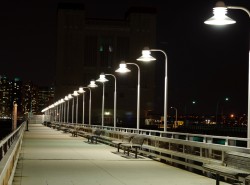FHWA Finalizes Rule on Contractor Contracting Method
FHWA issued a final rule this week that allows the Construction Manager/General Contractor (CM/GC) method to be used on highway federal-aid projects nationwide. Under this contracting method, a single contractor may provide pre-construction and construction services. CM/GC allows construction expertise to be used during the design phase, often leading to innovation, improved quality and reduced time and cost on complex projects. The final rule was required under MAP-21 and effectively opens the door for the use of the CM/GC method by state departments of transportation. The final rule formalizes FHWA’s procedures for approving and authorizing CM/GC projects. CM/GC is part of the agency’s Every Day Counts initiative designed to foster innovation and accelerate project delivery.






